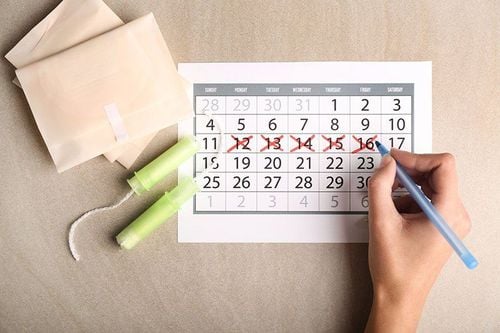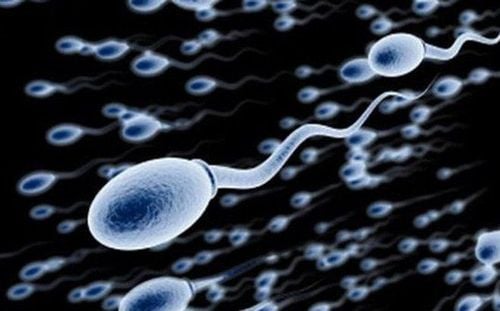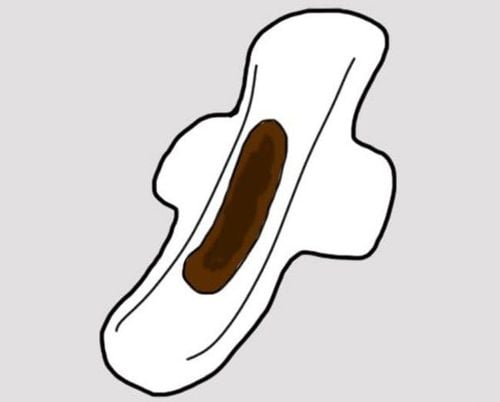This is an automatically translated article.
The first day of the menstrual cycle is counted as the first day of menstruation. Therefore, every time you look at the menstrual cycle chart to predict the possibility of pregnancy, you need to pay attention to this timeline to accurately date.
1. What is the first day of the menstrual cycle?
The first day of the menstrual cycle is counted as the first day of menstruation. Menstruation can last from 3 to 8 days, with an average of 5 days. The most menstrual bleeding is in the first 2 days of the menstrual period.
From days 6-14, when menstruation ends, the uterine lining becomes thicker, with more blood and nutrients. The aim is to prepare for fertilization and pregnancy when the egg and sperm meet.
Around day 14, an egg will be released into the ovary, move down the fallopian tube and then into the uterus. During migration, if the egg meets the sperm in the fallopian tube, fertilization can occur. If fertilization is successful, the fertilized egg will travel down to the uterus and implant in the uterine wall.
Days 25 - 28, if the egg is not fertilized, the hormonal properties will change, signaling the uterus to prepare to shed the lining, the egg will break and fall out with this lining, causing menstruation. The cycle starts again from day 1, the first day of the menstrual cycle.
2. How is menstruation called normal?
Normal menstruation has the following characteristics:
Menstrual duration lasts from 3-8 days Menstruation reappears every 21-35 days (from the first day of a period to the first day of the period). next period) The total amount of blood lost during the period is about 2-3 tablespoons. However, the fact that menstrual blood is mixed with other fluids can make you think that the amount of blood loss is more
3. How to test cervical mucus?
Cervical mucus test can help you predict the phases of your menstrual cycle, based on the following table:
| Chu kỳ kinh nguyệt | Tính chất của dịch nhầy | Khả năng sinh sản |
| Ngày 5 | Không có gì đặc biệt | Không khả quan |
| Ngày 5-8 | Không có gì đặc biệt | Không khả quan |
| Ngày 8-12 | Chất tiết ít, đục, dính | Không khả quan |
| Ngày 13-15 | Có nhiều chất nhầy “lòng trắng trứng”, trong, ướt, đàn hồi | Khả năng thụ thai cao |
| Ngày 16-28 | Không có gì đặc biệt | Không khả quan |
You are most fertile on the days when you have abundant and elastic mucus. However, mucus monitoring is not a safe method of contraception.
4. Temperature tracking predicts the day of your period
Body temperature will usually inched up a bit on the day of ovulation. Before ovulation, your basal body temperature is usually between 36.2°C and 36.5°C. On the day of ovulation, the temperature can rise by as little as 0.5°C (for example, 36.7°C). to 37.1°C) and kept at this temperature until menstruation.
Temperature measurement is performed by measuring and recording the temperature as soon as you wake up after at least 6 hours of sleep/rest. It can help you determine if you're ovulating, how regular your cycle is, and the length of your menstrual cycle.
If your temperature stays the same throughout your menstrual cycle, chances are you're not ovulating. Contact your doctor if necessary.

Bạn có thể theo dõi nhiệt độ cơ thể những ngày đầu của chu kỳ kinh nguyệt
5. Ovulation Predictor Kit
Ovulation Predictor Kit measures the concentration of Luteinizing Hormone (LH) in urine. This hormone is always present in small amounts in the urine but increases in the 24-48 hours before ovulation.
More advanced kits measure levels of estradiol, a form of estrogen that peaks on the day of ovulation. Instructions vary between sets, so read the product manual carefully before use.
Refer to the website of Vinmec International General Hospital to update more medical, health and beauty information.
Please dial HOTLINE for more information or register for an appointment HERE. Download MyVinmec app to make appointments faster and to manage your bookings easily.
References: yourperiod.ca, womenshealth.gov












